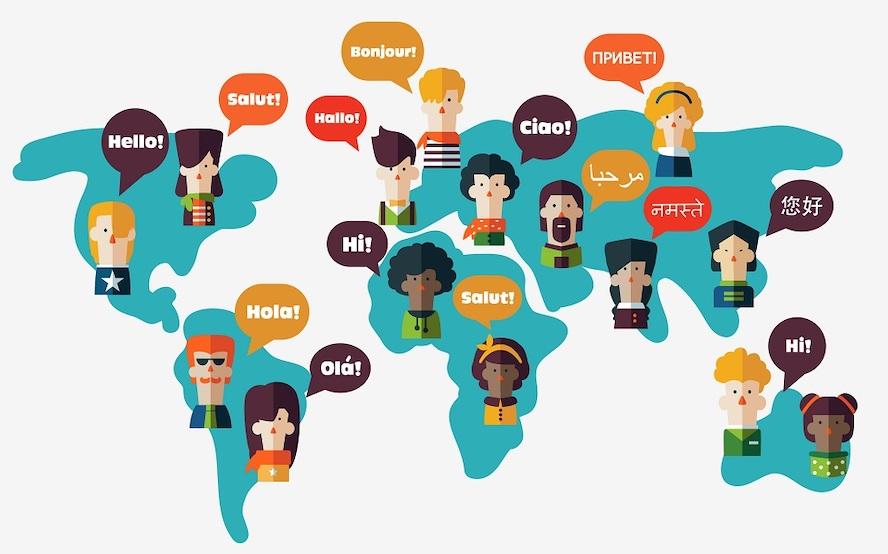
According to the original version of the Recommendation of the European Parliament and of the Council on Key Competences for Lifelong Learning (2006), the communication competences include two competences: communication in the mother tongue and communication in foreign languages. In the latest version of the European Reference Framework of Key Competences for Lifelong Learning (2018), the definition of the two competences was revised, due to the ambiguity of the concepts of "mother tongue" and "foreign language". Moreover, strong focus was addressed on literacy and on language development, considering a wide range of communication codes and channels, including specialized or academic language, visual and digital communication. Therefore, in the 2018 Framework the terms referred to the first two competences were changed as literacy and multilingual competences.
Communication in the mother tongue requires knowledge of vocabulary, functional grammar and the functions of language. It includes an awareness of the main types of verbal interaction, a range of literary and non-literary texts, the main features of different styles and registers of language, and the variability of language and communication in
different contexts. A positive attitude towards communication in the mother tongue involves a disposition to critical and constructive dialogue, an appreciation of aesthetic qualities and a willingness to interact with others, also involving foreign/second languages or English as Lingua Franca, which is the most commonly spoken language in the world.
Similarly to communication in the mother tongue, communication in foreign languages is based on the ability to understand, express and interpret concepts, thoughts, feelings, facts and opinions in both oral and written form in an appropriate range of societal and cultural contexts (Cuccurullo, Cinganotto 2020).
The Council Recommendation on a comprehensive approach to the teaching and learning of languages (2019) relaunched the concept of language awareness as a transversal dimension of the whole curriculum, not only referring to the language classes. In fact, it refers to any subject, including the language of schooling, the foreign and second languages, fostering multilingual competences.
The Companion Volume of the Common European Framework for reference of languages (2020), addressed the importance of multilingualism, also enhancing the linguistic repertoire of each learner, including his/her nonverbal communication, mobilizing all the resources needed to make meaning and to interact with an interlocutor in a particular situation and context.
On 28th September 2021 a seminar on multilingual key competence was held within the KIDS4Alll project, which engaged the participants in a very fruitful conversation on the importance of the multilingual competence, also referring to CLIL methodology.
In particular, two Italian projects carried out by INDIRE, one of the partners of KIDS4ALLL consortium, were presented during the webinar: Pluriliteracies Teaching for Deeper Learning (PTDL) and Healthy Linguistic Diet (HLD), two international models recognized and mentioned in the already mentioned Council Recommendation.
Pluriliteracies Teaching for Deeper Learning (PTDL) is a project promoted by the European Centre of Modern Languages in Graz, fostering a model created by Oliver Meyer, Do Coyle, Kevin Schuck and other experts from the Graz Group. The model aims at fostering deep learning by paying attention to the development of students ‘subject specific literacies as well as their conceptual understanding and automatization of subject-specific procedures, skills and strategies. PTDL not only makes the links between content and language learning visible, but it also shows how teachers can create learning trajectories taking students’ current abilities as a starting point and tracing their progress along the learning pathway.
The second pilot project is Healthy Linguistic Diet, an approach to language learning conceptualized and developed by Dina Mehmedbegovic-Smith, University College London and Thomas Bak, University of Edinburgh. This approach is based on an analogy between physical and mental health. Regular physical activity and a healthy diet are important factors in maintaining physical health. In the same way, the learning of languages and their regular use provide essential mental exercise, leading to a better brain health and an increase in “cognitive reserve” resulting in a later onset of dementia and an improved cognitive outcome after a stroke. HLD is aimed at initiating and facilitating a shift in thinking about learning another language/other languages as a key skill or an academic subject, to understanding that using two languages is a key ingredient in our cognitive development and well-being. The main focus is on developing life-long habits of learning and using at least two, ideally three or more, languages, based on awareness that these types of activities will help us equip our brains for enhanced cognitive functioning from early years to an advanced age. An example of HLD can be found in a school in Dublin District 15, Scoile Breide Carlini Church (Little, Kirwan 2019).
The two models are being experimented by a sample of Italian schools selected by INDIRE upon public tender and the activities are still in progress, with the consultancy of the international experts who authored the two models.
